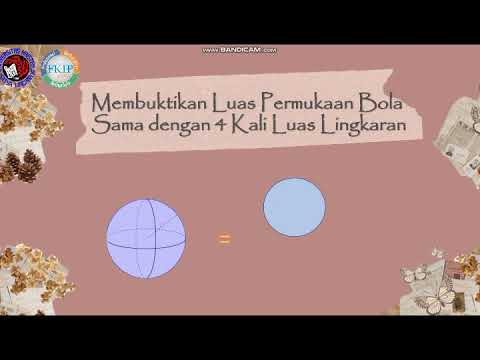But why is a sphere's surface area four times its shadow?
Summary
TLDRThis engaging video explores the mathematical connection between the surface area of a sphere and the area of circles. It presents two distinct approaches: one linking the sphere to an unwrapped cylinder and the other using geometric reasoning involving shadows. Through a series of exercises, viewers are invited to discover how the sphere's surface area relates to the areas of concentric circles, ultimately revealing a broader mathematical truth applicable to all convex shapes. The presenter emphasizes the beauty of these relationships, aiming to deepen viewers' understanding and appreciation of geometry.
Takeaways
- 😀 Embrace the journey of self-discovery and personal growth.
- 😀 Understand that mistakes are essential for learning and progress.
- 😀 Cultivating resilience helps overcome challenges and setbacks.
- 😀 Building strong relationships and connections enhances personal well-being.
- 😀 Practicing gratitude can lead to increased happiness and positivity.
- 😀 Setting clear goals provides direction and motivation in life.
- 😀 Mindfulness and self-awareness are crucial for emotional regulation.
- 😀 Taking time for self-care is vital for maintaining mental and physical health.
- 😀 Emphasizing continuous learning opens up new opportunities and perspectives.
- 😀 Finding passion and purpose can significantly enhance one's quality of life.
Q & A
What is the surface area formula for a sphere and how is it related to the area of a circle?
-The surface area of a sphere is given by the formula 4πr², which is a multiple of the area of a circle (πr²) with the same radius.
Why is it challenging to fit flat shapes onto the surface of a sphere?
-The curvature of a sphere is different from that of a flat plane, making it difficult to fit flat shapes like a piece of paper onto its surface without distortion.
How does the analogy of a cylinder help in understanding the surface area of a sphere?
-The surface area of the sphere can be thought of as equivalent to the lateral area of a cylinder that has the same radius and height as the sphere, minus the top and bottom.
What are the two competing effects that occur when projecting rectangles from the sphere to the cylinder?
-As rectangles are projected outward, their widths get stretched, especially near the poles, while their heights get squished down due to the angle of projection.
Why do the effects of stretching width and squishing height cancel each other out?
-The scaling of width (r/d) and height (d/r) during projection results in a net effect where the area of the original rectangles remains constant.
What geometric concept helps understand the similarity between the triangles involved in the projection?
-The angles of the triangles formed by the projection reveal their similarity, which can be justified through the properties of tangents and radii.
How can the relationship between the sphere and its four circles be visualized?
-By unwrapping the four circles into triangles, which can be arranged in a way that fits into the rectangle representing the sphere's surface.
What is the purpose of the guided exercise presented in the script?
-The guided exercise aims to help viewers understand the connection between the surface area of a sphere and the area of its shadow on the xy-plane through hands-on problem-solving.
What is the significance of the correspondence between the shadows of rings and their areas on the sphere?
-The correspondence helps establish that the area of a circle is one-fourth the surface area of the sphere, as the shadows of the rings represent the same relationship.
What general principle is discussed regarding the average area of shadows for convex shapes?
-The average area of all shadows of any convex shape, when averaged over all orientations in 3D space, is exactly one-fourth of the surface area of that shape.
Outlines

This section is available to paid users only. Please upgrade to access this part.
Upgrade NowMindmap

This section is available to paid users only. Please upgrade to access this part.
Upgrade NowKeywords

This section is available to paid users only. Please upgrade to access this part.
Upgrade NowHighlights

This section is available to paid users only. Please upgrade to access this part.
Upgrade NowTranscripts

This section is available to paid users only. Please upgrade to access this part.
Upgrade NowBrowse More Related Video

Pembuktian Rumus Luas Permukaan Bola

LUAS PERMUKAAN DAN VOLUME BOLA - BANGUN RUANG SISI LENGKUNG (5) - MATEMATIKA SMP KELAS 9

Calculer l'aire et le volume d'une boule - Troisième

Luas Permukaan Prisma dan Tabung Hal 213-215 Bab 6 Kelas 7 Kurikulum Merdeka

Bangun Ruang Sisi Lengkung [Part 3] - Bola

Surface Tension - Why are drops spherical? | #aumsum #kids #science #education #children
5.0 / 5 (0 votes)